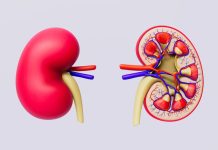
Kidney and liver diseases are serious health conditions that can impact the quality and length of life. However, with advances in medical science, many patients with these diseases can still lead fulfilling lives.
Understanding the survival rates of these conditions can help patients and their families navigate the journey with hope and informed expectations.
Kidney disease is often a progressive condition categorized into various stages, with the final stage being end-stage renal disease (ESRD), where kidney function is below 10% of normal capacity. Treatment options typically include dialysis or a kidney transplant.
According to research from the National Kidney Foundation, the survival rates for kidney disease vary significantly depending on the stage of the disease at diagnosis and the treatment.
For example, the five-year survival rate for patients on dialysis is around 35-40%. However, those who receive a kidney transplant generally have better outcomes, with a five-year survival rate upwards of 80%.
Liver disease includes a range of conditions such as hepatitis, fatty liver disease, and cirrhosis. The progression and survival rates of liver disease depend heavily on the cause and stage at diagnosis, as well as on the overall health and lifestyle of the individual.
For instance, chronic hepatitis B and C can lead to severe liver damage over time, but with effective antiviral treatments, many patients can manage the condition for years without progressing to cirrhosis or liver cancer.
Patients with alcoholic liver disease who stop drinking can see significant improvements in liver function and overall prognosis. For those with cirrhosis, the severity of the scarring and the function of the liver determine the survival rate.
A study in the Journal of Hepatology noted that patients with compensated cirrhosis (where the liver still functions relatively well) have a much better survival rate than those with decompensated cirrhosis, where survival rates can be significantly lower.
Early detection and treatment are key factors that improve survival rates in both kidney and liver diseases. Regular check-ups and monitoring can catch these diseases in earlier, more treatable stages.
Lifestyle changes, such as maintaining a healthy weight, eating a balanced diet, exercising regularly, and avoiding substances that can harm the liver (like alcohol and certain drugs), also play crucial roles in managing these conditions.
Technological advancements and research have also contributed to improved outcomes. For kidney disease, newer dialysis techniques and better management of complications have enhanced the quality of life and extended survival for many patients.
In liver disease, breakthroughs in antiviral therapies have drastically changed the outlook for patients with viral hepatitis, turning what was once a potentially fatal diagnosis into a manageable chronic condition.
Patient support systems, including education about the disease, nutrition counseling, and psychological support, are also vital. Studies have shown that patients who actively engage with their healthcare providers and adhere to treatment plans have better outcomes.
In conclusion, while kidney and liver diseases can be life-altering, the combination of early detection, advanced medical treatments, and lifestyle changes has significantly improved the survival rates and quality of life for many patients.
The journey with these diseases is not always easy, but it is far from hopeless. With the right care, many patients not only survive but thrive.
If you care about kidney health, please read studies about pesticide linked to chronic kidney disease, and this drug may prevent kidney failure in people with diabetes.
For more information about kidney health, please see recent studies about drug duo that may treat kidney failure, and results showing these vegetables may protect against kidney damage.
Copyright © 2024 Knowridge Science Report. All rights reserved.



